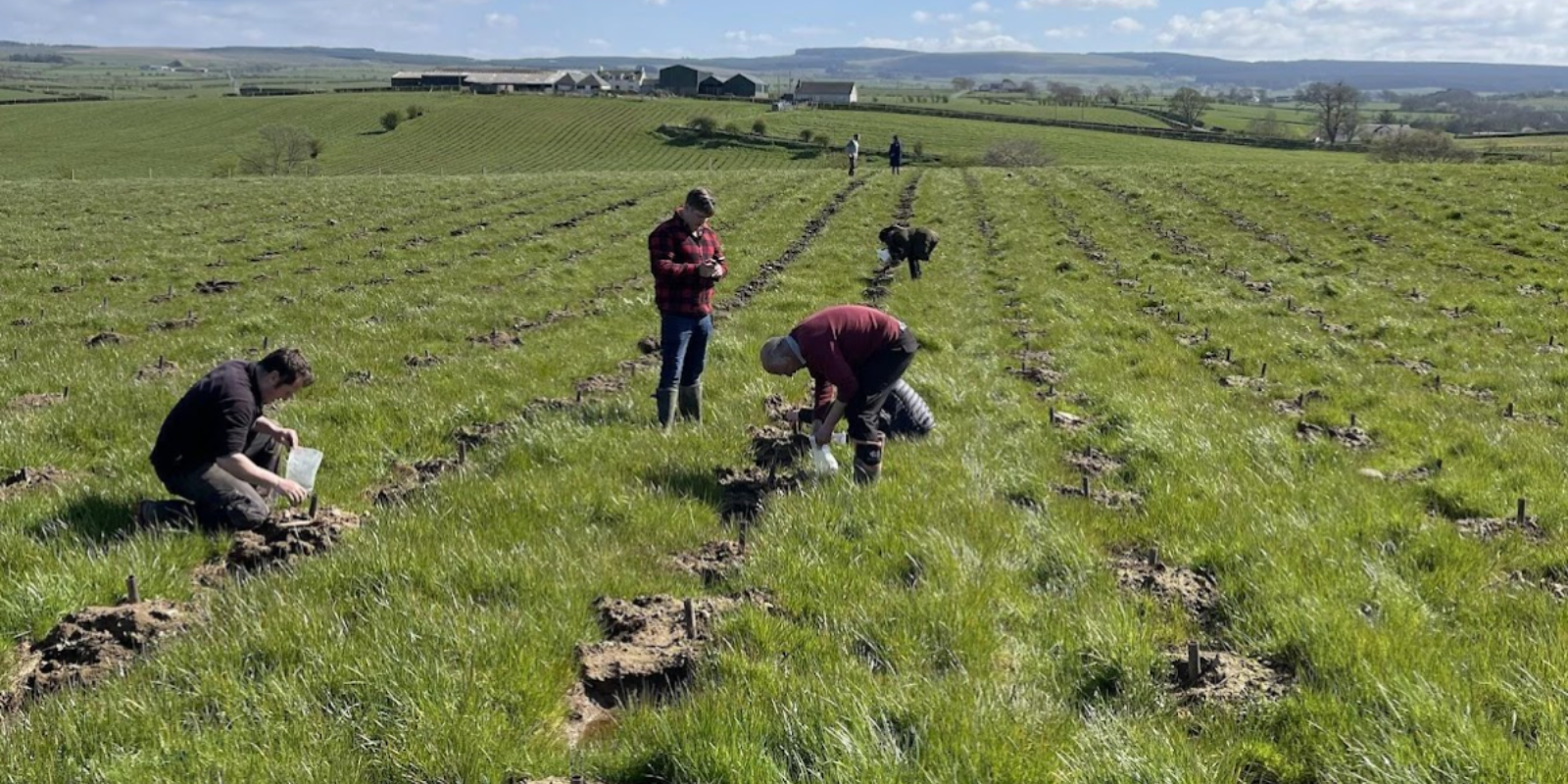While we tend to think about how well trees are doing above ground on our sites, it is easy to overlook what is happening underground when it comes to tree planting and the carbon cycle in general. In fact, it is largely what happens below the surface that can determine the success of our work and the viability of our woodlands looking to the future.
Life-giving soil
The soil subsurface is a living, breathing, hidden ecosystem, that is only in recent years getting the attention it deserves. Not only does soil provide the life-giving medium from which all terrestrial life depends, it also serves as an important carbon storage system. So perhaps unsurprisingly, we at The Future Forest Company are keen to find ways that we can improve the soil ecosystem for our trees, which in turn means healthier woodlands, as well as more CO 2 captured from the atmosphere….But how?
Underground networks
When it comes to woodland soils, one of the important known players in this complex ecosystem is Mycorrhizal fungi. Young saplings in particular benefit significantly from the symbiotic relationship that can establish between these fungi and the tree’s root system. What happens is that the fungi provide trees with essential nutrients, in exchange for sugars from photosynthesis. While trees can of course draw in nutrients by themselves, the efficiency of this process is much lower without the presence of the mycorrhizal fungal network. The question is… how can we utilise this incredible process for our own woodland creation projects?
Harnessing technology
Thankfully, one Edinburgh-based company have the answer to this question. Rhizocore Technologies specialises in acquiring and growing locally-sourced mycorrhizal fungi from samples taken around the UK. These specific fungal lines are cultured and developed into pellet form (aka Rhizopellets), ready to be introduced to the soil at planting. Each batch of pellets are tailored to each individual forestry project and their specific requirements. Our Senior Forestry Manager Jamie Adcock and Woodland Carbon Administrator Corin Jack were fortunate to see firsthand how this product is produced and tested at their laboratory facilities at the Roslin Innovation Centre.


Into the Ground
We are now in the process of putting these Rhizopellets to the test by conducting a field trial of this product at our newly-planted Carston site in East Ayrshire. As no strangers to the dirt, a sizable cohort of The Future Forest Company team set out on a glorious day in late April to apply 800 Rhizopellets to the roots of saplings within a mixture of native Oak, Aspen, Silver Birch and Wild Cherry. Adjacent to this plot of 800 treated trees is a comparable (control) plot of 800 untreated trees. All trees were measured for stem diameter and height to compare tree growth as the mycorrhizal fungi network develops. We are excited to see what happens as the trial progresses…

It is our hope that by conducting such trials and providing more evidence for the uses of mycorrhizal fungi in the field, that there might be a case for utilising this approach more widely at our sites; perhaps even promoting such measures as part of future forestry policy and practice. The potential benefits for tree development, resilience to climate change and carbon reductions both above and below ground make it a very promising prospect for the future…so watch this space!
